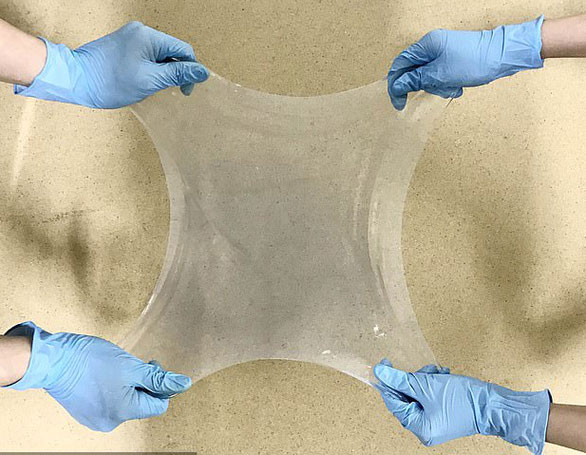Japan invented 'super glue' used underwater
The newly invented special glue that can attach materials including glass, metal and stone in seawater in a matter of seconds.
This adhesive, temporarily called hydrogel , works by harnessing electrostatic attraction between molecules to attach to the surface, similar to how we rub the surface of a balloon so that it creates an electrical charge. and stick to the ceiling.

These glues are like natural adhesives found in marine animals like galaxies.(Photo: Nature Communications).
This method is believed to be more tightly bonded and more durable than previous "waterproof" adhesives . These glues are like natural adhesives found in marine animals like galaxies. The drawback is that these glues often oxidize quickly, causing them to lose their adhesion.
Researchers at Hokkaido University (Japan) developed hydrogels from polymer molecular chains, using electrostatic forces between these molecules to glue the glue onto negatively charged surfaces. These surfaces may be made of glass, stone and metal.
They also found a way for these electrical interactions to take place in a salt water environment like seawater.
The team tested the glue on a 500g glass block. After 5 seconds they were able to lift the glass block out of the water. In fact, the strength of the glue can reach about 60 kilo pascals - close to the pressure in the cabin of commercial aircraft.
Published in Nature on November 12, researcher Jian Ping Gong said the adhesive is easy to produce, low-cost and highly applicable. It can act as a super binder in an ion-rich environment like seawater, overcoming the problems of limited binders under the sea today.
"Hydrogel is highly applicable. It can be used to patch holes, leaks in the bottom of ships, bond sand to protect the marine environment, stick to concrete blocks built under the sea or salvage objects from. seabed up , " said researcher Jian Ping Gong.
The team also hopes that the invention will inspire world scientists to explore the same glue that works in other harsh environments.
- Super glue from predatory bacteria
- "Super glue" mimics lizard legs
- Super glue that mimics gecko feet and mussels
- Super glue heart patch
- 'Bio-glue' helps visceral injuries stop bleeding
- Super glue from meat-eating bacteria
- 'Super glue' imitates lizard feet
- Biological glue gun for wound healing
- Found a kind of super glue from the Stone Age - The sign of intelligence is not known?
- Glue helps wound heal after surgery
- 10 products that change the lives of anonymous inventors
- Successfully developed gravel glue that breaks down is sticky
- Super glue helps 'bandage' injured eyeballs within minutes
- Producing canoe diving underwater
 Daily use inventions come from universities
Daily use inventions come from universities Special weight loss device helps prevent appetite
Special weight loss device helps prevent appetite 8 inventors were killed by their own inventions
8 inventors were killed by their own inventions Iran invented a motor car powered by water
Iran invented a motor car powered by water